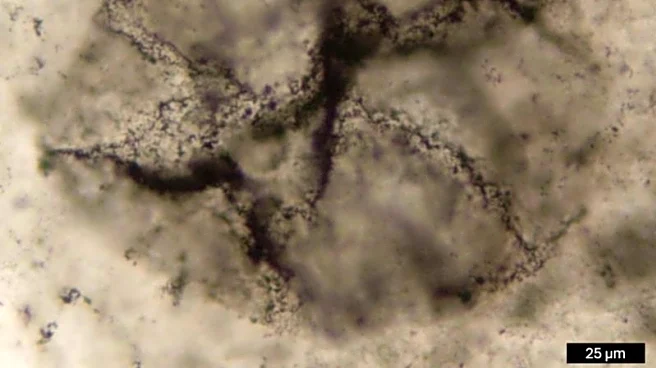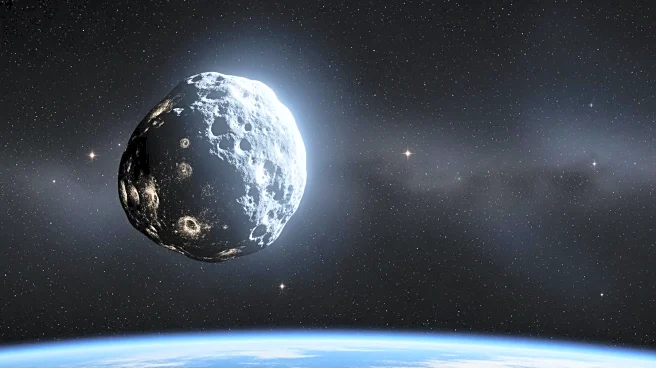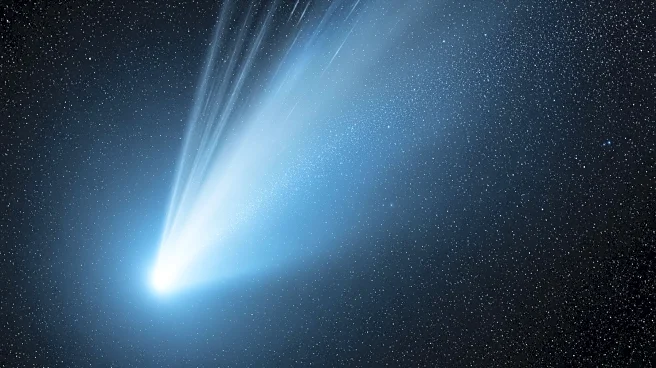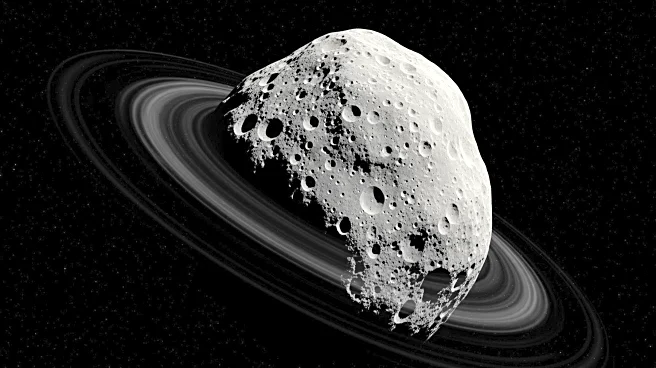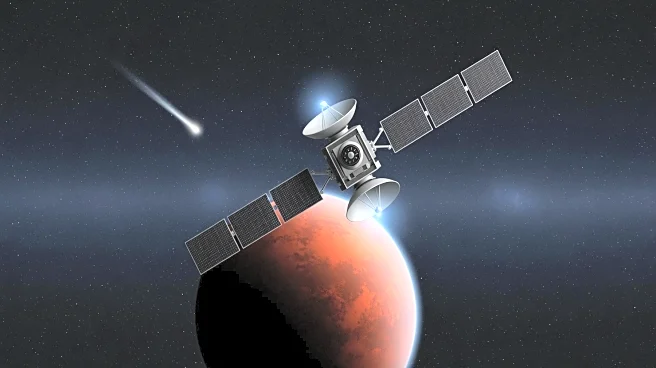What's Happening?
NASA's Cassini mission has revealed new organic compounds in ice grains ejected from Saturn's moon Enceladus. These findings, published in Nature Astronomy, indicate the presence of previously undetected
organics in the moon's subsurface ocean. The ice grains, collected during a close flyby, contained fresh organic molecules, suggesting active chemical processes beneath Enceladus' icy shell. This discovery builds on previous data showing nitrogen- and oxygen-bearing compounds in Saturn's E ring, but the new analysis focuses on particles directly from the moon's plumes. The presence of these organics could support chemical reactions essential for life, marking a significant step in astrobiology.
Why It's Important?
The detection of fresh organic compounds on Enceladus is crucial for understanding the moon's potential to support life. These findings suggest that complex organic chemistry is occurring in its subsurface ocean, which could provide the building blocks for life. This discovery narrows the focus of astrobiological research, highlighting Enceladus as a prime candidate for future exploration. The presence of such compounds also enhances our understanding of the chemical processes that may occur on other icy bodies in the solar system, offering insights into the conditions necessary for life beyond Earth.
What's Next?
The findings from Cassini's data will likely influence future missions to Enceladus and similar icy moons. Scientists may prioritize exploring these environments to search for signs of life and further study the chemical processes occurring beneath their surfaces. The data could also inform the design of new instruments capable of detecting and analyzing organic compounds in space. As interest in astrobiology grows, Enceladus may become a focal point for international space agencies seeking to understand the potential for life in the solar system.





